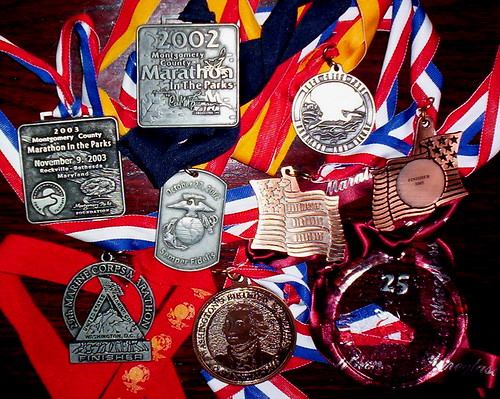Jason Fitzgerald is a 2:39 marathoner and a USATF-certified coach at Strength Running. Here he gives us his top 3 tips for training for a marathon.
-----------
Training for your first marathon might seem daunting: the sheer length of the race itself can be an enormous challenge. Anyone who has finished 26.2 miles will agree that running for hours and hours isn’t easy. But of course, completing your first marathon is a big accomplishment and something that you can cross off your bucket list.
The marathon can be addictive – it keeps many runners registering for their next race to continue improving their times. You may find that even you fell in love with the race after you finish – soon, you’re doing crazy things like committing to qualify for the Boston Marathon some day!
But because of the distance of the marathon, your training must be different than if you were doing a shorter race. You’ll need more time to prepare and build your fitness to get ready for higher mileage, more exact long run fueling, and more difficult speed workouts.
It sounds overwhelming, but it’s simply an extension of shorter races like the 10k and the half marathon. If you give yourself 16-20 weeks to prepare (and you start in good shape anyway), then you’ll be successful at your first marathon.
During your lead-up to your goal marathon, there will be three major parts of your training that will help you accomplish your goals (even if that’s just to finish). Let’s dive in to what these training components are, and more importantly, how you can use them to crush your first 26.2!
1) Mileage!
My college cross country coach likes to yell “Mileage!” as the answer to nearly any running question. He’s being funny, of course, but there’s real value to the lesson he’s teaching: running more mileage usually means you’ll race faster.
Running more mileage than you did for a previous 10k or half marathon race is critical because of how long it takes to run a marathon. 26.2 miles is a long way!
Beginners almost always need to increase their endurance and in addition to a consistent long run (more on that next), running more mileage is the best way to get stronger. In fact, it’s far more effective for beginners to run more weekly mileage than doing intervals on the track.
Remember to be selective about where you add mileage, however. Adding two more miles to your recovery run isn’t as effective as adding that distance to your long run. Be smart and make your harder days harder and your easy days easier.

2) Your Long Run is Priority #1
Long RunThere’s no doubt about it: the most important workout for any marathoner (beginners or elite runners) is the long run. The start of your training period (usually 16-20 weeks before your marathon) is when you need to start increasing the distance of your long run. A general rule of thumb is that you should complete at least one 20 mile long run before the race.
But in an ideal world, you should complete at least two 20 milers before race day. A more advanced strategy is to include some “goal marathon pace” running during the second half of your long run. If you’ve completed several half marathons, you might be ready to tackle this type of workout.
Long runs are so important because they are the most specific workout for the marathon – the rule of specificity is definitely in play here! Running 20 miles is very similar to running 26.2 miles, so it helps you prepare the most. Keep in mind that the marathon is 99% aerobic, which just means that you’re not going into oxygen debt to run the race, unlike those sprint intervals you might have done at the track. Because of that, and the distance, the long run is your main training tool to successfully improve stamina.
If you’re looking at a marathon plan before you start your training, be cautious of any plan that limits the distance (or number) of long runs. It’s a crucial workout and absolutely necessary to finish strong.

3) Run SPECIFIC Workouts
Your long run is the most specific marathon workout that you can do – but what other runs should you do during the week?
When I coach a runner to a marathon finish, we always focus on two different types of workouts: a tempo run and Marathon Pace running. Once every week you should do one of these workouts.
A tempo run is done at a pace that you could maintain for about an hour. It’s often called “comfortably hard.” If your 10k race time is 60 minutes then this is also your tempo pace. An example workout is 6 miles with 20 minutes in the middle at tempo pace.

Marathon pace (often abbreviated as MP) is simply the pace that you’d like to run over the course of your upcoming marathon. You can usually run for longer at MP than at tempo pace since it’s slower. A good MP workout example is 10 miles with the last 30 minutes at marathon pace.
You can run a small amount of faster workouts in your marathon training, but overall these are the two main types of workouts that have the most benefit for marathoners. Remember the rule of specificity and focus on aerobic workouts that contribute specifically to your marathon fitness.
By using all three of these strategies in your training, you’ll be in great shape and ready to tackle your first marathon. Prioritize your long run, boost your weekly mileage, and focus on aerobic workouts like tempo and marathon pace runs. Succeeding at the marathon doesn’t have to be so hard – especially if you train smart!






Leave a comment (all fields required)